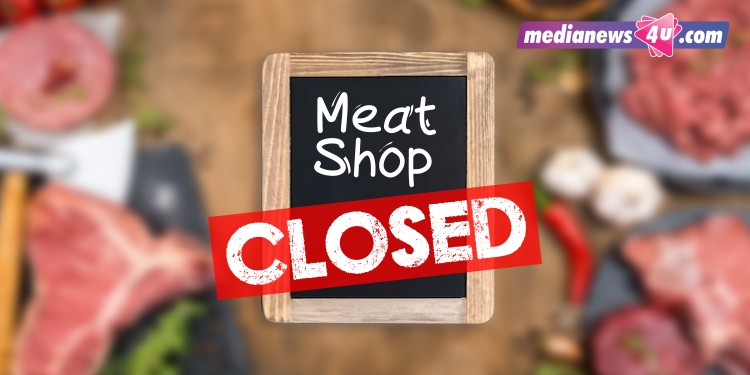One of the categories that witnessed a spurt during the pandemic was online meat brands, that delivered direct to consumer, promised relief from the unhygienic neighbourhood meat store and some even rode on the crest to establish a strong retail presence.
According to a report by marketing consultancy firm RedSeer, during the Covid period customers increasingly preferred purchasing meat online. The factors attributed to this positive growth was the assurance of safety and hygiene, availability of various products under one umbrella and doorstep service.
As per media reports, the online meat players witnessed a 10 to 15pc jump in average revenue per user and reported a 10 to 15pc improvement in customer retention in 2021.
The RedSeer reported also states that the meat market is expected to become $80 to 85bn by 2024 and is up for disruption by branded players.
Cut to 2023. Chennai-based meat delivery startup Fipola which was established in the year 2016 shut operations. While confirming the news to Medianews4u.com, Founder and Managing Director Sushil Kanugolu said that Fipola was forced to shut operations as it was unable to raise another round of funds owing to unfavourable market conditions.
While Fipola has stopped operations completely, TenderCuts has pivoted to a new venture, HappyChops – an integrated marketplace for local meat shops which will help them with the latest technologies and supply chain to sell online. As a consumer, choose the store near you and they will deliver.
While two such stories have come out in the open, industry watchers believe there are more in store.
Some believe that the players got the business fundamentals wrong. The rate at which the meat brands burnt investors’ money to acquire and retain customers was unviable, they say. Adding to their woes was not having a good grip on the supply chain, is the contention.

Founder & CEO of Nandu’s Chicken, Narendra Pasuparthy, says, “We, as a part of Nanda Group, have been observing the meat consumption behaviour for the last 25 years. While the business of online meat has fuelled the growth of the ecosystem, it contributes barely 0.5 percent of the entire poultry business.”
According to him, the exponential growth of the online meat business in the last six years was spurred by early adopters in urban markets. The drivers were about costs and discounts, and not so much quality, taste and health. Therefore, when it came to online meat business, customer loyalty is still non-existent, he argues.
Pasuparthy says that many of the players don’t have the supply chain in place. “And given the pace at which the online meat brands expanded their business using the money raised through investors, I’m afraid their business fundamentals are still not in place and the on-ground reality today, is that customers still trust offline players for their daily needs,” he adds.
“Contrary to what they claim, they don’t have their own supply chain and are heavily dependent on external vendors. Therefore, there is zero traceability and transparency about the origin of the meat they are selling. They ride behind the promises given by the suppliers including claims such as, “The meat is fresh, farm-to-fork and antibiotic-free etc. In fact, they have approached companies like Nandu’s (since we also produce our own poultry), asking for bulk orders of chicken,” he adds.
However, as a principle, Nandu’s does not supply meat to online D2C meat players.

Mathew Joseph, COO and Co-founder of FreshToHome, also believes that not having a grasp over the business fundamentals has led to the shutting down of D2C meat brands.
“In the case of most of the local butcher shops or fish outlets, it’s run without a manager or a supervisor and all the roles are played by an individual. But in an organised meat brand outlet, different people have to be recruited for different roles, which will add more to the monthly expenses. If the business has to be scaled, then the products need to be sold in a similar or lesser price range than that of an ordinary vendor. Otherwise, customers will approach the local vendor for the products. Hence, the brands need to spend more money for customer acquisition and retention in the form of promotions, discounts, and other offers. This is one of the reasons why meat brands have shut shop,” says Joseph.
Another reason Joseph points out is the lapse in controlling wastage from outlets.
“Most of the unbranded meat outlets will be family run and they have a strong grip on the employees and would be keen on reducing the wastage. That is not the case with the branded outlets. Gradually, the branded sector might come up with technology to control the product wastage, but till then it remains to be a problem,” Joseph adds.
Another reason why the business went unviable for some meat brands is the procurement rates and process, he notes.
“The ordinary shops are procuring products directly from the seashore. But the branded players, they go through relentless process, paper and data work before the products arrive at the outlets, which increases the cost from point of purchase to sales. The sales price is not proportional to the increasing cost. Most of them are run on investor funds and the dearth in funds is also a reason for the shut down,” Joseph adds.
Is fund freeze a reason for the downfall?

“Licious, FreshToHome and organised players account for a revenue of $700 to 750mn, while the overall meat market is valued at around $50bn. As the organised players account to around 1pc of the market, they have a large opportunity ahead of them. D2C meat delivery segment is a growing space, the startups doing well will continue to get bigger. Currently the funding situation is tight and particularly tough to raise series B and above. Last year alone, eight VC-funded startups across the sector closed down. As per the Nasscom-Zinnov study, both early stage ($5.9 billion in CY2022) and seed stage ($1.2 billion in CY2022) investments grew between 25 to 35 pc over 2021. In 2022, tech startups in the seed stage secured 1,018 investments. Late stage investments bore the brunt with a decline of 41 pc in deal sizes greater than $100 million,” says Sanjay Tripathy, Founder, Agilio & Strategy and Marketing Consultant.
Tripathy observes, “Last year was particularly challenging for the startup ecosystem with an end to cheap money, rising interest rates and a complex geopolitical environment. This led to considerable correction in the global public markets, particularly in technology stocks that saw a significant drop in valuation. The positive aspect of the slowdown has again put the focus back to building sustainable business models and brought significant correction to startup valuation. Indian startups now need to look beyond valuations to value creation and scaling up with a profitability focus.”

Lloyd Mathias, Business Strategist and former marketing head of HP Asia, says, “Various factors like quality, pricing, convenience of doorstep delivery hygiene, and smart packaging catered to the growth of D2C meat brands. What we are witnessing now is two things: one is that a consolidation is happening as there are too many players. Secondly, the funding issues. Today a lot of investors are re-looking at their portfolios and are prioritising shorter-runway and profitable business models.”
Will we see the exits of more brands?
“As mentioned earlier, whenever a category matures, consolidation happens. This has resulted in few exits which is a good sign and going ahead the stronger and differentiated ones will survive. The smaller ones could get acquired or disappear,” observes Mathias.
Joseph agrees with Mathias’ statement. Brands with a vision and plan will definitely emerge stronger, rest will have to exit the business, he adds.

















